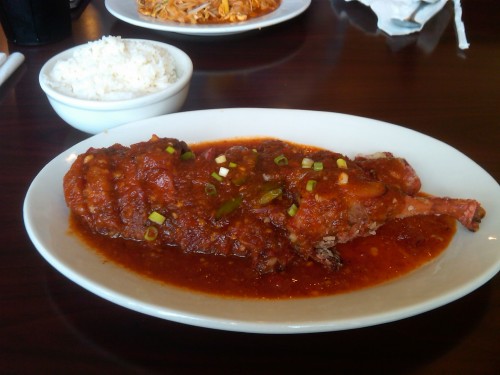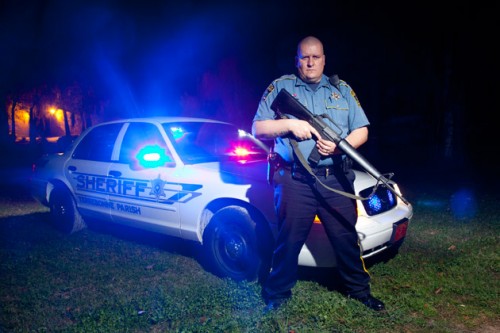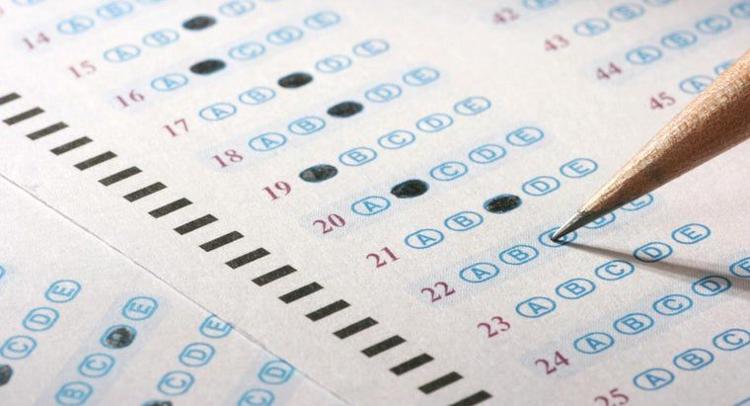
Lunch Bites: Thai offering on the lunch plate at Emerald
June 28, 2012
Weatherford leaving Terrebonne
July 3, 2012Week three of “Cajun Justice” brought more of the same – exaggeration, bayou-centric crime, and flirtation with the supernatural.
The fifth and sixth episodes exposed clues pointing to the existence of the rougarou, profiled a fight between two shrimping families, followed a deputy who went to New Orleans to be rid of a curse, and watched as deputies dragged a waterway while looking for a missing person.
“A Real Drag,” the first episode last night, showcased the underwater search for a man killed in a boating accident and suggested the existence of the rougarou. Just as those two ideas shouldn’t be paired together in a sentence, they shouldn’t be paired together in an episode. The contrast between a lost life and the exploitation of light-hearted folklore is too great.
Alas, there is video proof of the rougarou. At least, there’s a video of a light shining on a brown object suspended in the air. And then, there’s slow motion of the brown object, with the recording man’s voiceover included so as to stymy concerns of fabrication. Matted grass in the vicinity of the sighting points to something fishy, and the trampled trail leads nowhere. The brown object vanished.
“In our culture, rougarous are real things,” the Cajun Chorus tells us. Also: “He doesn’t really mess with the meat too much. He likes the blood.”
The second comment comes as Deputy Keith Bergeron responds to a call about a mutilated calf. Supposedly the day after the brown object vanished from the banks of Bayou Little Caillou, a cattle rancher lost one of his livestock.
“If you keep putting two and two together, you’re bound to find a rougarou,” Bergeron surmises. Viewers should expect to see more clues that point to the existence of the shape-shifting, blood-feasting swamp monster.
Perhaps the rougarou hunt will become the second story arc of the series. The first arises in “Cursed” as Deputy Tom Arnold, a California native, looks to shake off a spell he believes was placed on him by a criminal he arrested weeks before.
The bad luck that drives Arnold to this paranoia is responding to an alarm-system call at an abandoned house and being temporarily stranded with a flat tire. So he drives to New Orleans, where a priestess eases his mind.
Back on Bayou Little Caillou, the rougarou is forgotten as Lt. Merlin Daigle and Sgt. Dudley Authement respond to a territorial dispute between shrimping families. One of the men actually fired a shotgun into the bayou, we’re told, because he was tired of being bossed around by the other family. The two families shout at each other whenever possible, and a man on a boat takes off his shirt in a measure of fight preparedness. The shotgun is confiscated and the captain who fired it into the water is arrested.
Later, Daigle returns when the alleged bossy family’s shrimp boat burns. Was it arson? No. As it turns out, someone forgot to take an extension cord running to the boat’s battery out of the bayou. Yes, you read that correctly: An extension cord ran from under the water to the boat’s battery, and that surprisingly sparked the fire.
“Cajun Justice” is insulting, and not only to Terrebonne Parish. Viewers are given no credit in the impatient mad dash for attention. If a moment is not intense, it’s either cut or framed with cutaways to rusted shacks. If not viewed as a joke itself, the show is largely a humorless hodgepodge of grim endeavors. This is the case unless the gang is horsing around during lulls in Terrebonne crime with tired, voodoo-centric riffs and the stoic, wise-cracking sheriff.
Watching this show too closely may induce seizures. The shots flash by in a furious pace. We get three angles of an officer walking up to an abandoned house. Then, it’s two perspectives of an officer talking to a witness. Then, shots of decay and close-up looks at bearded men, unkempt women or that perpetually cackling man with no teeth flash with a ferocious quickness. No shot streams for longer than three or four seconds. Ever. It’s nauseating.
Six episodes in, and the formula is clear. Also, the formula is absurd.
Producers love the low-angled shots of patrol cars. They love the boat run aground. They adore rust and rotting docks, and they pine for tight shots of disheveled bystanders. This much is apparent throughout every episode, each of which has proven to be little more than a blatant cry for attention.
Almost a third of the way through the season, and so far, any redeeming moment is outweighed by the uncivilized portrayals. Barely anything shown can be construed as flattering for the parish, and “barely” may be giving the show too much credit. Raising awareness for coastal erosion? Water is emphasized, sure, but the pace with which the marshland disappears is ignored.
This isn’t a plea for propaganda, but truly, what does Terrebonne Parish get out of this deal other than $31,500 in the sheriff’s office coffers? Nothing more than exposure. Is being associated with this lackluster, degrading show worth that benefit? I don’t have the credentials to answer that question.
That’s it from me, until detectives embark on the case of the Bayou Bone.
What did you think of the fifth and sixth episodes of “Cajun Justice?”








